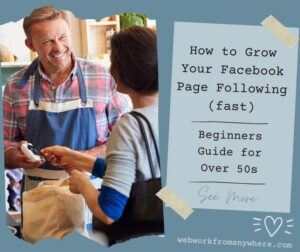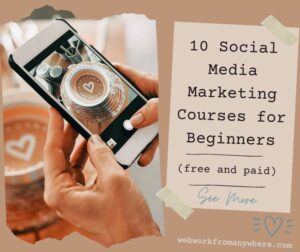Remember when starting a product business meant renting a premises, buying boxes of inventory (and so much more) and hoping people would actually buy what you made? Print-on-demand changes everything!
With this online business you create designs for t-shirts, mugs, wall art, or phone cases. When someone orders, your partner company prints it and ships it directly to your customer. You never touch inventory, yet you earn profit on every sale….
- 1. How Does Print-on-Demand Work?
- 2. What are the Pros and Cons of Print-On-Demand?
- 3. Printify vs Printful: Which Platform?
- 4. How do I Find My Print-on-Demand Niche?
- 5. How do I Create Designs (I’m Not a Designer)?
- 6. How do I Set up My Store and Get Sales?
- 7. See Video: Step-by-Step Printify Setup
- 8. Will I Succeed?
- 9. Your First Steps
This post contains affiliate links. If you click and make a purchase, I may earn a small commission at no extra cost to you. Thank you for your support!
1. How Does Print-on-Demand Work?
If you’ve got creative ideas – or even just understand what makes certain groups of people laugh or feel understood – you can build a print-on-demand business from your laptop.
You upload designs to a platform like Printify or Printful. These companies connect to manufacturers who print your designs on hundreds of products. You choose which items to offer and set your own prices.
When a customer buys from your online store
- The order automatically goes to your print partner.
- They print your design, package it, and ship it to your customer.
- You pay them their base cost (say, $12 for a t-shirt), keep the difference between that and your retail price (maybe $28), and never worry about inventory. (buy you do work on marketing!)
Your main job becomes creating designs people want and getting those designs in front of the right audience.

2. What are the Pros and Cons of Print-On-Demand?
a) Pros: What works in your favor
- You can start for under $100 with zero inventory risk.
- Test unlimited design ideas without financial commitment.
- If a design doesn’t sell, remove it and try something else.
- Work from anywhere, and the business scales without getting complicated.
- It’s genuinely creative work if you enjoy that.
b) Cons: The challenges
- Profit margins are modest – typically $8-15 per item.
- You need volume to make meaningful income.
- Shipping takes 7-14 days, so you’ll deal with impatient customers occasionally.
- Quality control sits with your print partner, not you.
- The market is competitive, so standing out requires either great designs or finding an underserved niche.
This works best for people who enjoy creating visual content and don’t mind that it’s a volume game. If you’re willing to create consistently and market smartly, it’s a legitimate income stream.

3. Printify vs Printful: Which Platform?
a) Printify
Printify works like a marketplace connecting you to 90+ print providers with 850+ products.
You can compare prices between manufacturers for the same item.
A basic t-shirt costs $8-10 on Printify. They offer a free plan for five stores.
Their premium plan ($29/month) gives you 20% off all products.
The tradeoff? Quality varies between print providers, so order samples before committing. Think of Printify as offering more options and better prices, but requiring more quality checking.
b) Printful
Printful takes a curated approach with fewer manufacturers but tighter quality control.
That same t-shirt costs $10-13, but you’re paying for consistency.
They excel at branding options like custom packing slips, hang tags, and branded packaging. Their mockup generator is excellent.
Printful doesn’t charge monthly fees – you only pay when someone orders.
Which one? Start with Printify if you’re budget-conscious. Switch to Printful later when you’re ready for premium quality and custom branding. Many successful sellers use both.

4. How do I Find My Print-on-Demand Niche?
Most beginners try to sell to everyone. “Funny t-shirts” is not a niche. “Sarcastic shirts for emergency room nurses” is a niche.
The most profitable print-on-demand stores serve specific communities – people who share identity, profession, hobby, or humor.
Dog lovers buy dog-themed products. But golden retriever owners who treat their dogs like children?
That’s a passionate micro-community that will buy products speaking directly to their experience.
Ask yourself what communities you understand from the inside or ask AI to research for you.
- Teacher?
- Quilter?
- Camping enthusiast?
- New grandparent?
Those lived experiences help you create designs that resonate authentically. You know the inside jokes, the frustrations, the things that make that group feel seen.
Visit Etsy and search potential niches. If you find shops making sales with similar concepts, that’s validation. Competition means there’s a market.

5. How do I Create Designs (I’m Not a Designer)?
Good news – you don’t need to be an artist. Text-based designs sell incredibly well.
Think clever sayings, profession-specific humor, motivational quotes, or niche references.
Create these in Canva using their free templates and fonts.
If you want custom graphics, hire designers on Fiverr for $10-50 per design. Or subscribe to Creative Fabrica ($9/month) and download pre-made graphics you can customize and use commercially.
The secret isn’t artistic brilliance – it’s understanding what your specific audience wants to say to the world.
A simple text design that perfectly captures how retirees feel about early bird specials can outsell a gorgeous watercolor painting that speaks to no one in particular!
Start with 10-15 designs in your chosen niche. Test what sells, create more of that, and gradually build your product line.
6. How do I Set up My Store and Get Sales?
Most beginners start with Etsy because 95 million active buyers are already there searching for products.
- Etsy integrates directly with both Printify and Printful.
- Your first sale often happens within weeks from Etsy’s built-in traffic.
The downside? Etsy charges 6.5% transaction fees, and you’re competing with thousands of sellers. Think of it as renting space in a busy mall – great foot traffic, but you pay for it.
Eventually, many sellers open their own Shopify store for better profit margins and brand control.
But that requires driving your own traffic through social media, ads, or content marketing.
Start with Etsy for quick validation, then expand once you’re making consistent sales.
Marketing Tips
- Pinterest is a powerful visual search engine. It’s easy to create eye-catching pins using Canva (free or paid).
- People often search for ideas like “funny teacher mugs” or “retirement gift ideas” and your products can show up in these searches.
- Instagram and TikTok are also great for showcasing products in action through reels and short videos.
7. See Video: Step-by-Step Printify Setup
8. Will I Succeed?
Most new print-on-demand sellers make their first sale within 2-6 weeks on Etsy with decent designs.
The first few months might bring $100-300 in revenue (your profit is typically 30-40% of that).
By six months with consistent effort, you might reach $500-1,500 monthly revenue ($200-600 profit).
After a year of learning what sells and doubling down on winners, successful sellers often hit $2,000-5,000 monthly revenue ($800-2,000 profit).
This isn’t get-rich-quick. It’s a legitimate way to earn supplemental income doing creative work from home if you treat it like a real business and stay consistent.
9. Your First Steps
Here’s what to do this week:
- Sign up for a free Printify account (or Printful if you’re sure) and browse products.
- Pick one specific niche based on communities you understand.
- Create your first 5-10 designs using Canva or hire someone on Fiverr.
- Open an Etsy shop and list those first products.
Will they all sell? Probably not. But you’ll learn what resonates, what people click on, and what converts browsers into buyers.
That real-world feedback is worth more than any amount of planning.
Print-on-demand won’t replace a full-time income overnight, but it can grow into meaningful supplemental income while giving you a creative outlet.
The people who succeed aren’t necessarily the most talented designers – they’re the ones who understand specific audiences and keep showing up consistently.







